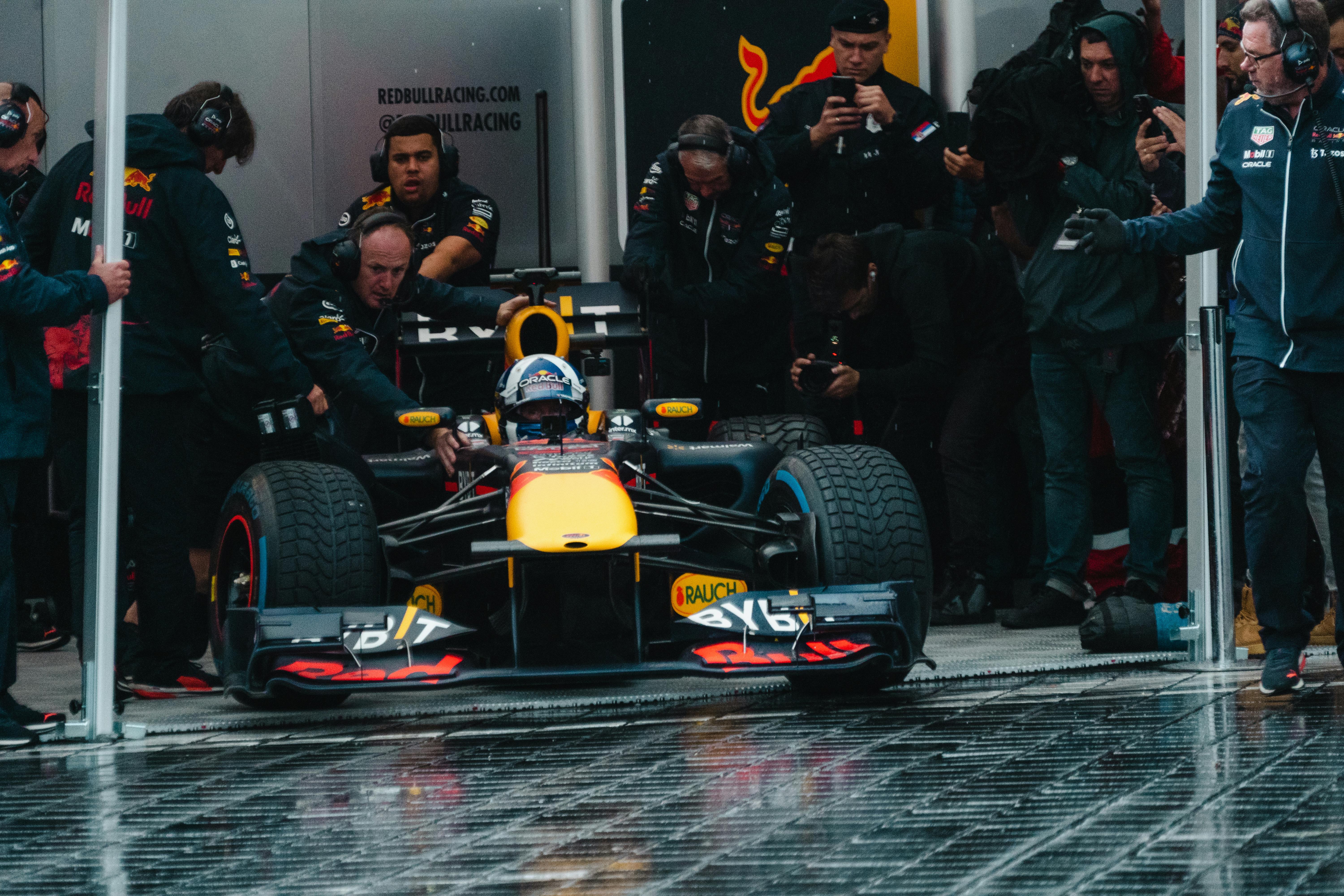Pit stops are the great equalizer in a race. Where anything can happen in something like baseball, Formula 1 is often consistent. Reliable engines remain towards the top of the standings. Drivers that have good results in qualifying often have good results in the race. The crucial moments where viewers’ eyes are glued to the screen are the start, and pit stops. Having a photo finish down the final stretch is rarer than you’d think—the gaps between first and second might be a full minute at times.
As a rule, each car must change its tires once during the race, and every visit to the pits takes about twenty to thirty seconds in total. Cars in front of the pack must try to stretch their lead by pushing, completing faster laps so they can safely pit and come out ahead of their competition. If a team is fortunate enough to have both drivers leading the race, the one behind may be ordered to defend, slowing down whoever may be chasing them as battling by its nature takes up more time than driving with no traffic. This also helps their teammate nurse their tires so the team can get at least one guaranteed finish on the podium or within the top ten for points.
An ideal race strategy is a one-stop, satisfying the requirement and having the durability take the driver to the end of the race. Another stop could mean that something has gone wrong for them, a flat spot or a collision that requires a longer pit stop to replace the entire front wing. But some tracks are harder on tires than others, and if other teams are doing two stops or so, strategies are adjusted on the fly. Each team carefully watches what their opponents are doing (and monitors their radio communications) so they can react in kind. In the past, you would have teams order their pit crews to grab their fresh tires and jacks and rush out of the garage with the sole purpose of causing other teams to call their drivers in to pit, but they themselves would stand around for a few minutes holding their equipment before running back inside—a fake-out.
Other tactics you might hear on the broadcast are undercuts and overcuts. An undercut is a manoeuvre where a car pits and, now on fresh tires, can quickly put in faster laps than the car in front of them so when their opponent needs to pit (recognizing the undercut, usually soon after), the overtake can happen when it is in the pits or the pitlane. An overcut is staying out when the car in front pits—on older tires but in cleaner air, pushing hard with the hope of gaining enough ground to comfortably pit and come out ahead of the first car. Overcuts are less popular, and anything you see on screen is almost always an undercut.
A bad pit can be devastating as well. Daniel Ricciardo was poised to take the Monaco GP in 2016 after taking pole, led for 32 laps until he came in for a pit stop that his team was not ready for. He sat in his car for 12 seconds, an eternity for a stop, and Hamilton took the lead and ultimately the victory—with its iconic but narrow streets, it’s difficult to overtake anybody in Monaco.
Those are the fundamentals. There is always a rabbit hole to fall down with Formula 1’s rich history, constantly changing tech, and driver drama. Join me in the final part of this series where I wrap it all up and get you to join me in watching the 2024 season of Formula 1.


